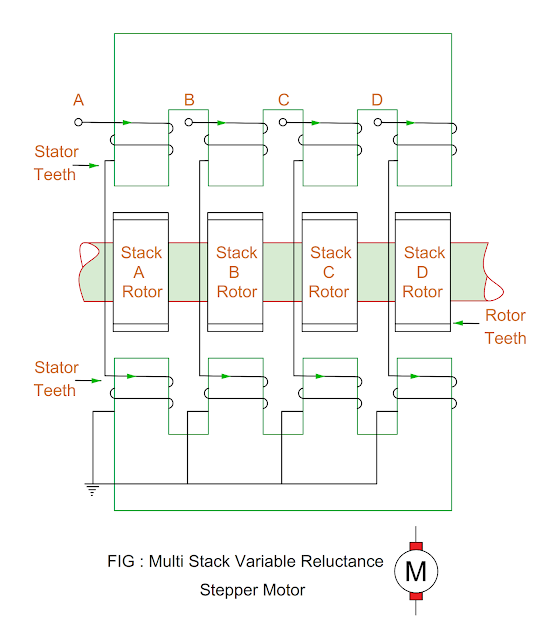The construction, step angle, advantages and
disadvantages of variable reluctance stepper motor is given in this theory.
Construction of Variable Reluctance Stepper Motor
- Figure shows four stack variable reluctance stepper motor.
- We can achieve low step angle by multi stack variable reluctance stepper motor.
- The stator frame and rotor shaft are common in the multi stack variable reluctance stepper motor.
- Each stack is parallel to shaft axis and its excitation is given by separate winding.
Step angle in Variable Reluctance Stepper Motor
- The number of stator poles is equal to number of rotor poles.
- If there are 20 teeth in the four stack VR stepper motor, the step angle becomes 4.50.
- Step angle ( Θ ) = 3600 / S
Where S = 4 (
Number of stacks ) × 20 ( Number of rotor teeth )
= 80
- Therefore, Step angle ( Θ ) = 3600 / S = 3600 / 80 = 4.50
Advantages and Disadvantages of VR Stepper Motor
Advantages
- Higher stepping rate is possible
- Low inertia of rotor
- Light weight
- Freely rotation of rotor
Disadvantages
- Nil detent torque
- Higher efficiency for low stepping rate
|
You
may also like to read these articles : Why Crushed Rock is
used at earth surface in substation? Important Indian
Electricity Rule NO 50 |









No comments:
Post a Comment